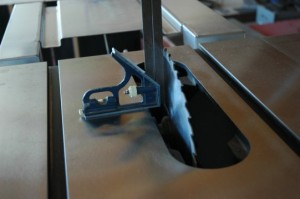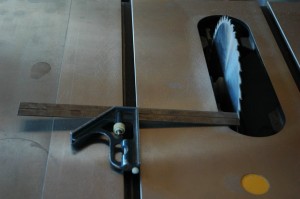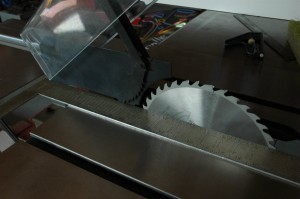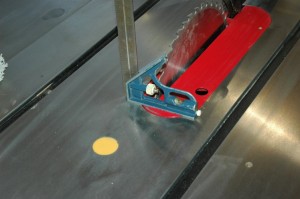I spent a good deal of time yesterday tuning up my table saw. It was one of the better Craftsman models and even though I purchased it used, I assumed that it was in good shape and it didn’t need tuning up. I even had to remove the table top extensions to get it home because it was extremely heavy.
I have subsequently learned a bit about some tune up essentials.
Before any work was done on the saw, it was unplugged from the power.
I began by cleaning the saw dust from the dust collection area using compressed air to clean the trunnions. The dust was then removed using a shop vacuum. The mechanism now works a lot more smoothly.
The saw blade was coated with pitch and residue. I used an aerosol cleaner to clean the blade.
After re-installing the blade I adjusted the stops for vertical (90 deg.) and 45 deg. A square was used to monitor the progress. Neither position had been correct before this operation.
I then aligned the blade with the miter slots. To accomplish this, I loosened the bolts securing the top and then was able to move the top until the blade was parallel with the miter slots. I used a compound square to compare the distance between the miter slot and the blade.
If the saw blade is properly aligned it is completely parallel to both the miter gauge slot and with the rip fence. The blade is then in line with the kerf it makes in the wood as it is cut.
If the rear of the blade is angled toward the rip fence the wood becomes squeezed between the fence and the blade as the cut is made. This results in the cut edge being torn and usually burned as the teeth rub against the cut edge. This may make the motor is work harder and, in turn, cause the blade to over heat.
Conversely, when the rear of the blade heels away from the fence, the teeth press against the waste side of the workpiece. This pulls the piece away from the fence and results in a slightly tapered cut.
I then aligned the fence with the saw blade. (Photo not available)
When I first got the saw the splitter and blade guard were not attached. This is generally not the recommended practice. I attached the splitter and aligned it with the saw blade and also adjusted it to be vertical.
Finally, the throat insert was adjusted even with the table top.




